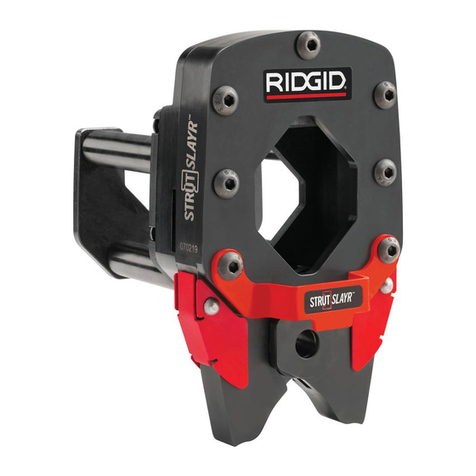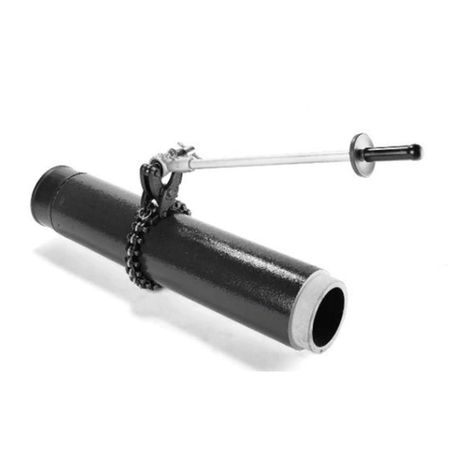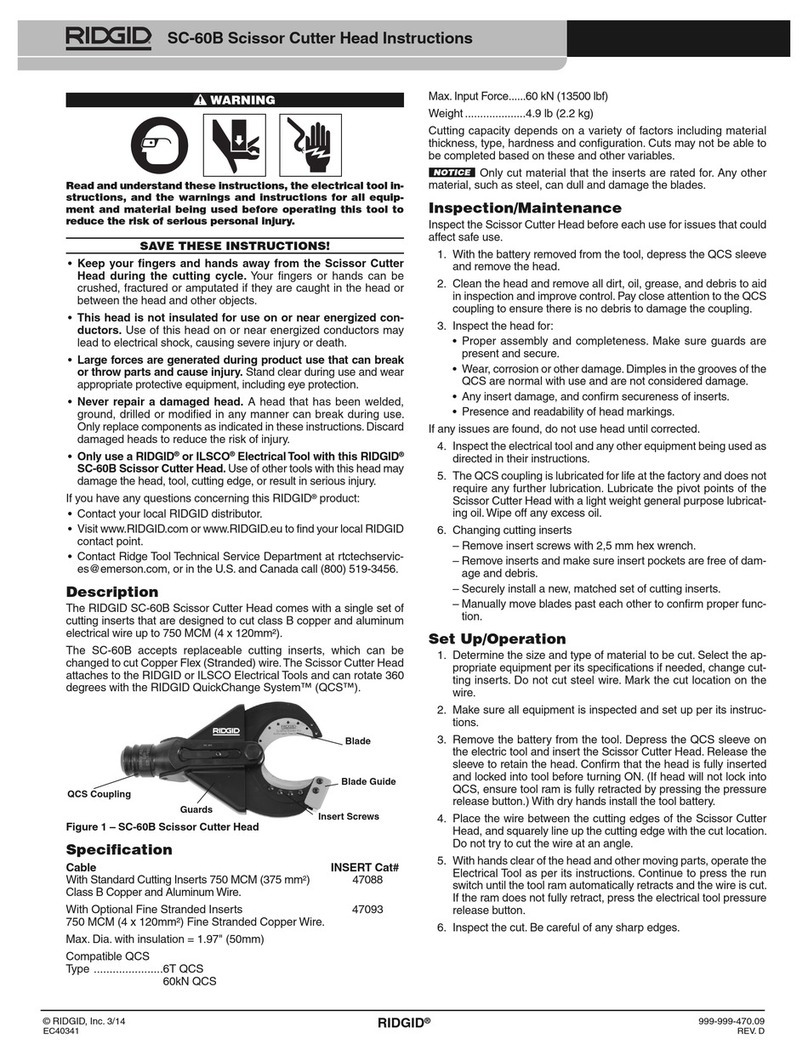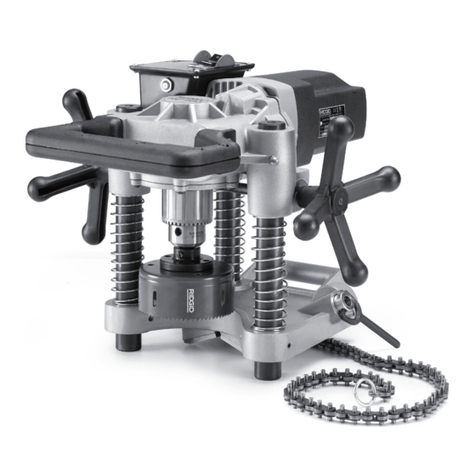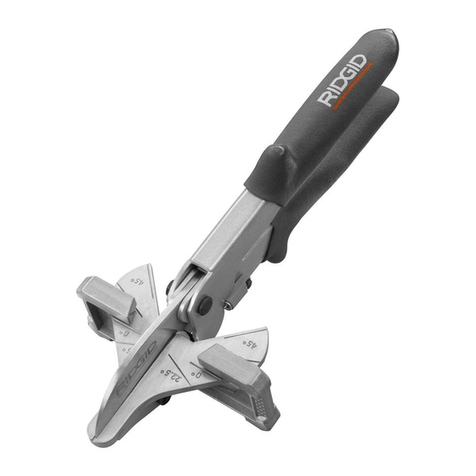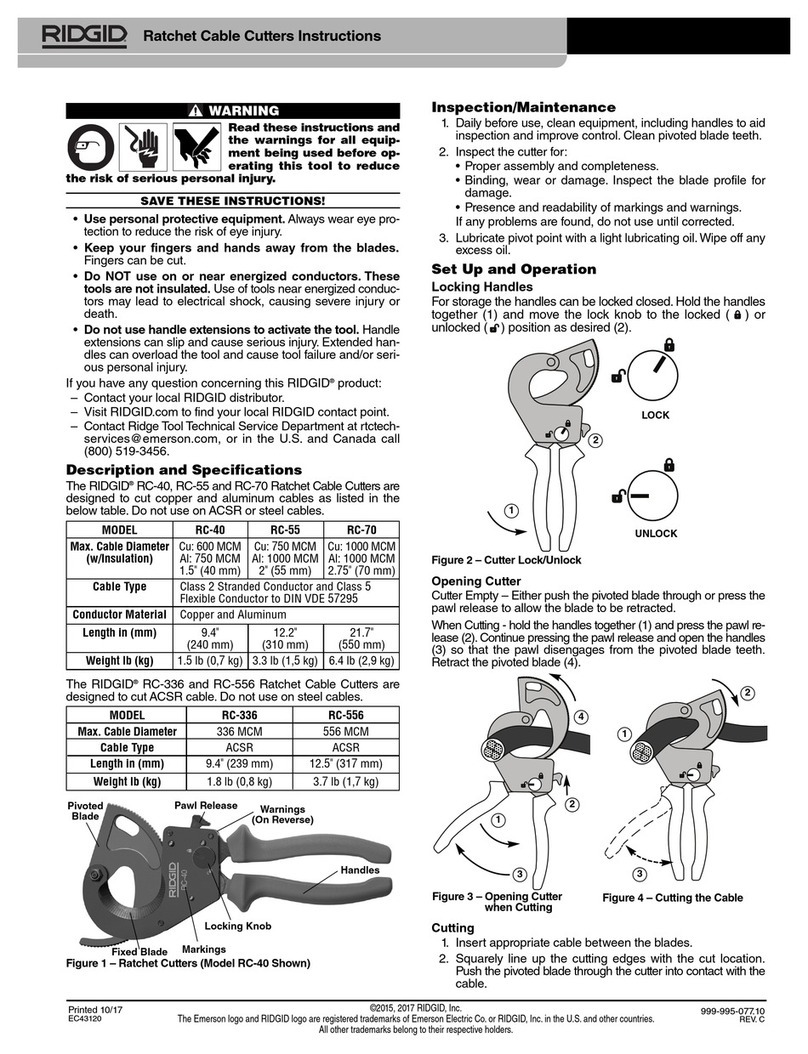
Doc # 18.47.1 – Ridgid 300 Safety Procedures
Printed copies of this document are uncontrolled.
•Keep all electric connections dry and off the ground. Do not touch plugs or tool with
wet hands. Reduces the risk of electrical shock.
7. Personal Safety
• Stay alert, watch what you are doing and use common sense when operating a power tool.
Do not use tool while tired or under the influence of drugs, alcohol, or medications. A
moment of inattention while operating power tools may result in serious personal injury.
• Dress properly. Do not wear loose clothing or jewelry. Contain long hair. Keep your hair,
clothing, and gloves away from moving parts. Loose clothes, jewelry, or long hair can be
caught in moving parts.
• Avoid accidental starting. Be sure switch is OFF before plugging in. Carrying tools with
your finger on the switch or plugging in tools that have the switch ON invites accidents.
• Remove adjusting keys before turning the tool ON. A wrench or a key that is left attached to
a rotating part of the tool may result in personal injury.
• Do not overreach. Keep proper footing and balance at all times. Proper footing and
balance enables better control of the tool in unexpected situations.
• Use safety equipment. Always wear eye protection. Dust mask, non-skid safety shoes, hard
hat, or hearing protection must be used for appropriate conditions
8. Tool Use and Care
• Do not use tool if switch does not turn it ON or OFF. Any tool that cannot be controlled
with the switch is dangerous and must be repaired.
• Disconnect the plug from the power source before making any adjustments,
changing accessories, or storing the tool. Such preventive safety measures reduce the risk of
starting the tool accidentally.
• Store idle tools out of the reach of children and other untrained persons. Tools are
dangerous in the hands of untrained users.
• Check for misalignment or binding of moving parts, breakage of parts, and any other
condition that may affect the tool's operation. If damaged, have the tool serviced before
using. Many accidents are caused by poorly maintained tools.
• Use only accessories that are recommended for your tool. Accessories that may be
suitable for one tool may become hazardous when used on another tool.
Page 4 of 11



